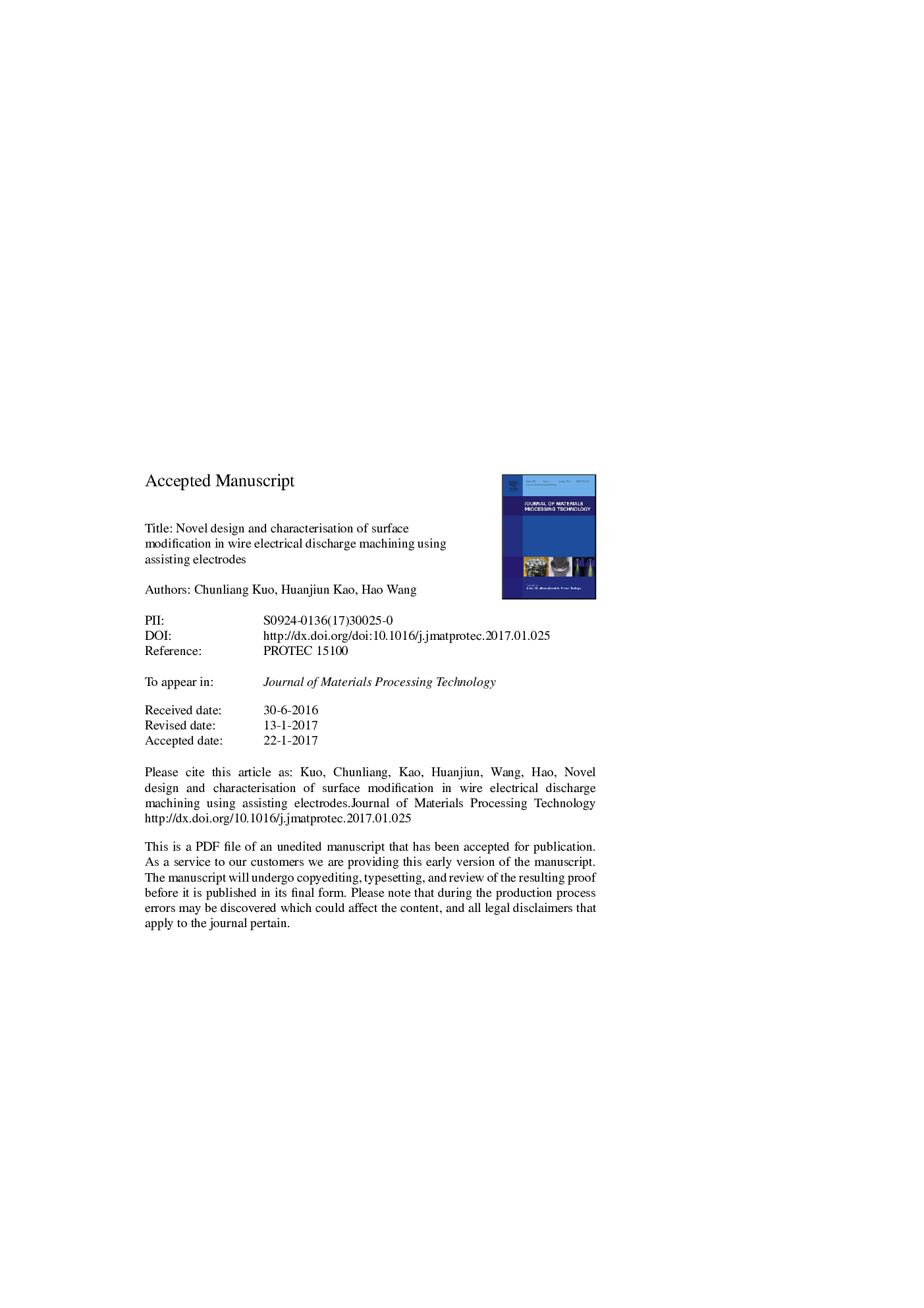| Article ID | Journal | Published Year | Pages | File Type |
|---|---|---|---|---|
| 5017885 | Journal of Materials Processing Technology | 2017 | 39 Pages |
Abstract
Electrode and dielectric materials have been extensively studied for surface modification using traditional electrical discharge machining and wire electrical discharge machining (WEDM). This paper develops a new WEDM surface modification process with assisting electrodes arranged in a stack order and target workpiece material which transfers the preferred alloy elements to the target surface. The process involves material migration from the upper and lower stack electrode materials to the sandwiched workpiece material when the wire reciprocally moves in the vertical direction at a proper feed rate. The designs of the machine tool and of the function of the discharge circuit are reported in detail. Experiments using statistical methods in fractional factorial (TaguchiâL9) and full factorial (4Â ÃÂ 3Â ÃÂ 3) are performed to identify the dominant factors for the developed surface alloying process. The effectiveness of the element transfer was verified with optimal parameters, such as the hardness of the workpiece material, the thickness of the sandwiched electrode materials, gap voltage, peak current, pulse on-time, pressure, and the flow rate of the dielectrics and flushing strategies. The surface integrity in terms of roughness, micro-hardness and the associated microstructure is also investigated to advance understanding of the underlying mechanism of the WEDM surface alloying.
Related Topics
Physical Sciences and Engineering
Engineering
Industrial and Manufacturing Engineering
Authors
Chunliang Kuo, Huanjiun Kao, Hao Wang,
